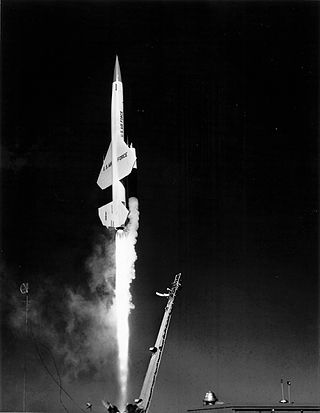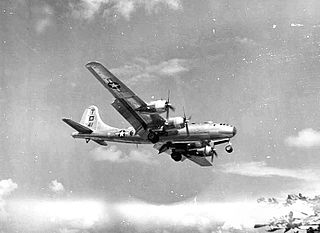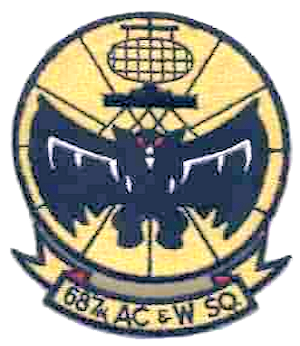Related Research Articles

The Boeing CIM-10 Bomarc was a supersonic ramjet powered long-range surface-to-air missile (SAM) used during the Cold War for the air defense of North America. In addition to being the first operational long-range SAM and the first operational pulse doppler aviation radar, it was the only SAM deployed by the United States Air Force.

Minot Air Force Base is a United States Air Force (USAF) installation in Ward County, North Dakota, thirteen miles (20 km) north of the city of Minot via U.S. Route 83. In the 2020 census, the base was counted as a CDP with a total population of 5,017, down from 5,521 in 2010. Minot AFB is the home of two major wings: the 5th Bomb Wing and 91st Missile Wing, both of the Air Force Global Strike Command (AFGSC).
Sandia Base was the principal nuclear weapons installation of the United States Department of Defense from 1946 to 1971. It was located on the southeastern edge of Albuquerque, New Mexico. For 25 years, the top-secret Sandia Base and its subsidiary installation, Manzano Base, carried on the atomic weapons research, development, design, testing, and training commenced by the Manhattan Project during World War II. Fabrication, assembly, and storage of nuclear weapons was also done at Sandia Base. The base played a key role in the United States nuclear deterrence capability during the Cold War. In 1971 it was merged into Kirtland Air Force Base.

Kirtland Air Force Base is a United States Air Force base. It is located in the southeast quadrant of the Albuquerque, New Mexico, urban area, adjacent to the Albuquerque International Sunport. The base was named for the early Army aviator Col. Roy C. Kirtland. The military and the international airport share the same runways, making ABQ a joint civil-military airport.

Royal Air Force Lakenheath or RAF Lakenheath is a Royal Air Force station near the village of Lakenheath in Suffolk, England, UK, 4.7 miles (7.6 km) north-east of Mildenhall and 8.3 miles (13.4 km) west of Thetford. The installation's perimeter borders Brandon.

The Air Force Materiel Command (AFMC) is a Major Command (MAJCOM) of the United States Air Force (USAF). AFMC was created on July 1, 1992, through the amalgamation of the former Air Force Logistics Command (AFLC) and the former Air Force Systems Command (AFSC).
Oxnard Field was the first airport in Albuquerque, New Mexico. It served as the home of commercial aviation in Albuquerque from 1928 to 1929 and remained in use for other purposes until 1948. The field was located on Albuquerque's East Mesa, east of the present site of Albuquerque International Sunport.

The Air Force Nuclear Weapons Center (AFNWC) is a USAF Named Unit, assigned to the Air Force Materiel Command at Kirtland Air Force Base, New Mexico. The AFNWC operates at the Center level of the AFMC. It is currently under the command of Major General John P. Newberry.

The 498th Nuclear Systems Wing was a wing of the United States Air Force based at Kirtland Air Force Base, New Mexico.

Volkel Air Base is a military airbase used by the Royal Netherlands Air Force (RNLAF) - Dutch: Koninklijke Luchtmacht (KLu), located near the village of Volkel, Netherlands. Located in the north-east corner of the province of North Brabant, the air base is home to one F-16 Fighting Falcon squadron, No 312 and a F-35 squadron No 313 and a maintenance, logistical, base Squadron for the RNLAF.

Kleine Brogel Air Base is a Belgian Air Component military airfield located 0.8 nautical miles east of Kleine-Brogel, in the municipality of Peer, Belgium. It is home to the Belgian 10th Tactical Wing, which operates F-16 Fighting Falcons. As part of nuclear sharing it is also the home of the United States Air Force's 701st Munitions Support Squadron. As of 2023, Kleine Brogel is one of six active air bases in five European countries with B61 nuclear bombs in underground WS3 Weapon Storage and Security System inside aircraft shelters.

Frenchman Flat is a hydrographic basin in the Nevada National Security Site south of Yucca Flat and north of Mercury, Nevada. The flat was used as an American nuclear test site and has a 5.8 sq mi (15 km2) dry lake bed that was used as a 1950s airstrip before it was chosen after the start of the Korean War for the Nevada Proving Grounds. Nellis Air Force Base land 12 mi × 30 mi was transferred to the Atomic Energy Commission on which Site Mercury was constructed on the flat for supporting American nuclear explosive tests. The 1951 Operation Ranger "Able" test was the first continental US nuclear detonation after the 1945 Trinity test, and Frenchman Flat also had the only detonation of an American artillery-fired nuclear projectile in the 1953 Upshot-Knothole Grable test using the M65 Atomic Cannon.

A missile launch facility, also known as an underground missile silo, launch facility (LF), or nuclear silo, is a vertical cylindrical structure constructed underground, for the storage and launching of intercontinental ballistic missiles (ICBMs), intermediate-range ballistic missiles (IRBMs), medium-range ballistic missiles (MRBMs). Similar facilities can be used for anti-ballistic missiles (ABMs).

West Mesa Air Force Station is a closed United States Air Force General Surveillance Radar station. It is located 9.5 miles (15.3 km) west of Albuquerque, New Mexico. It was closed by the Air Force in 1968 and turned over to the Federal Aviation Administration (FAA). The site is now data-tied into the Joint Surveillance System (JSS).

Francis E. Warren Air Force Base, shortened as F.E. Warren AFB is a United States Air Force base (AFB) located approximately 3 miles (4.8 km) west of Cheyenne, Wyoming. It is one of three strategic-missile bases in the U.S. It was named in honor of Medal of Honor recipient Francis E. Warren in 1930. Warren AFB is home of the 90th Missile Wing, assigned to the Twentieth Air Force, Air Force Global Strike Command. The 90 MW operates the LGM-30G Minuteman III ICBM. It is also the home of Twentieth Air Force, which commands all U.S. Air Force ICBMs.
Rushmore Air Force Station, South Dakota, was a secure weapons administration, storage, and handling facility for atomic, and later thermonuclear weapons, located adjacent to Ellsworth Air Force Base on its north side, that was operational from 1950 to 1962. It was operated by Air Force Materiel Command (AFMC), Armed Forces Special Weapons Project, and the Atomic Energy Commission (AEC). Sandia National Laboratories (SNL) was under contract to provide oversight and technical responsibility of the weapons housed at the AFS.

ATLAS-I, better known as Trestle, was a unique electromagnetic pulse (EMP) generation and testing apparatus built between 1972 and 1980 during the Cold War at Sandia National Laboratories near Kirtland Air Force Base in Albuquerque, New Mexico.

Joint Base Charleston is a United States military facility located partly in the city of North Charleston, South Carolina and partly in the city of Goose Creek, South Carolina. The facility is under the jurisdiction of the United States Air Force 628th Air Base Wing, Air Mobility Command (AMC).

Naval Support Activity Charleston, originally designated Naval Weapons Station Charleston, is a base of the United States Navy located on the west bank of the Cooper River, in the cities of Goose Creek and Hanahan South Carolina. The base encompasses more than 17,000 acres (69 km2) of land with 10,000 acres (40 km2) of forest and wetlands, 16-plus miles of waterfront, four deep-water piers, 38.2 miles (61.5 km) of railroad and 292 miles (470 km) of road. The current workforce numbers more than 11,000 with an additional 3,600 people in on-base family housing.
References
- 1 2 "Kirtland Underground Munitions Storage Complex Birdseye". cryptome.org. Archived from the original on June 1, 2023. Retrieved June 1, 2023.
- 1 2 3 Reed, Ollie (April 9, 2016). "KAFB home to massive nuclear storage complex". Albuquerque Journal. Archived from the original on September 18, 2021. Retrieved September 22, 2022.
Unofficially, it's the largest storage center for nuclear weapons in the world...
35°00′31″N106°32′58″W / 35.0085°N 106.5495°W